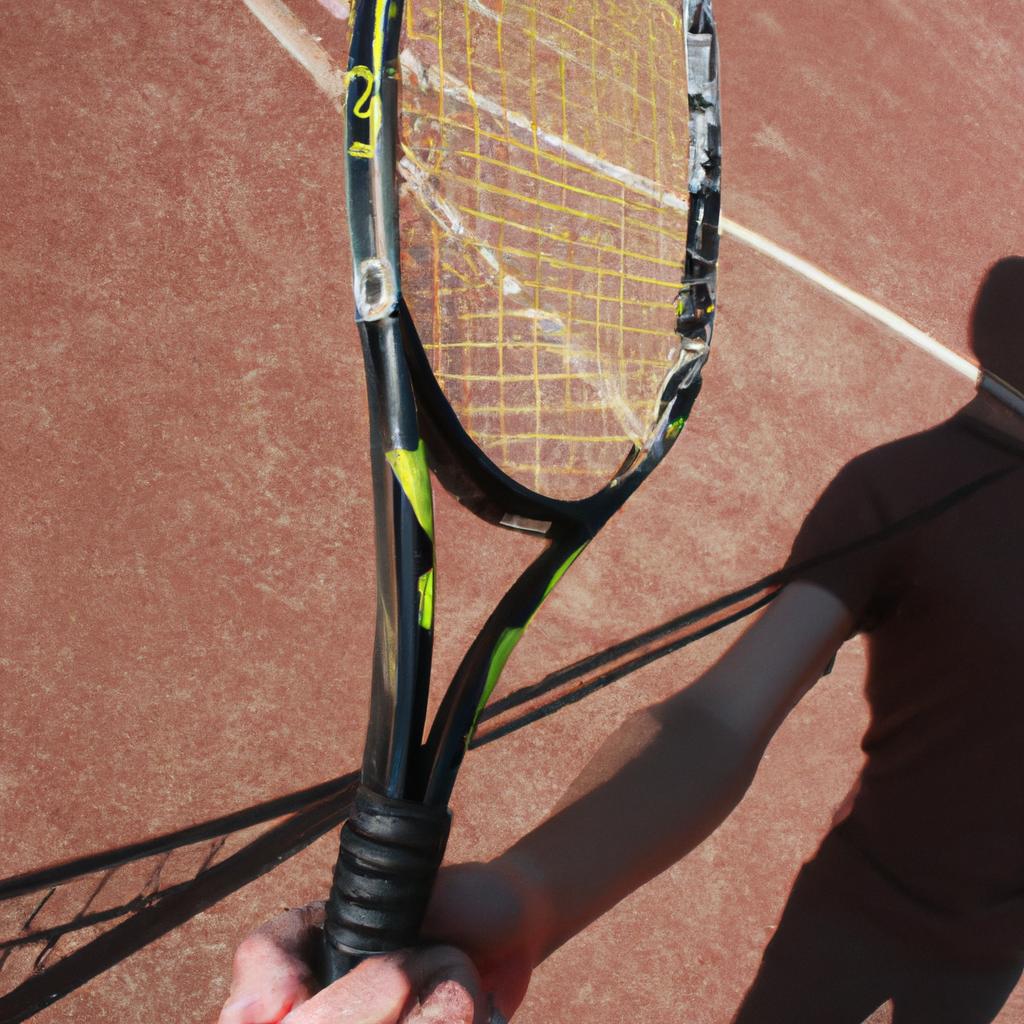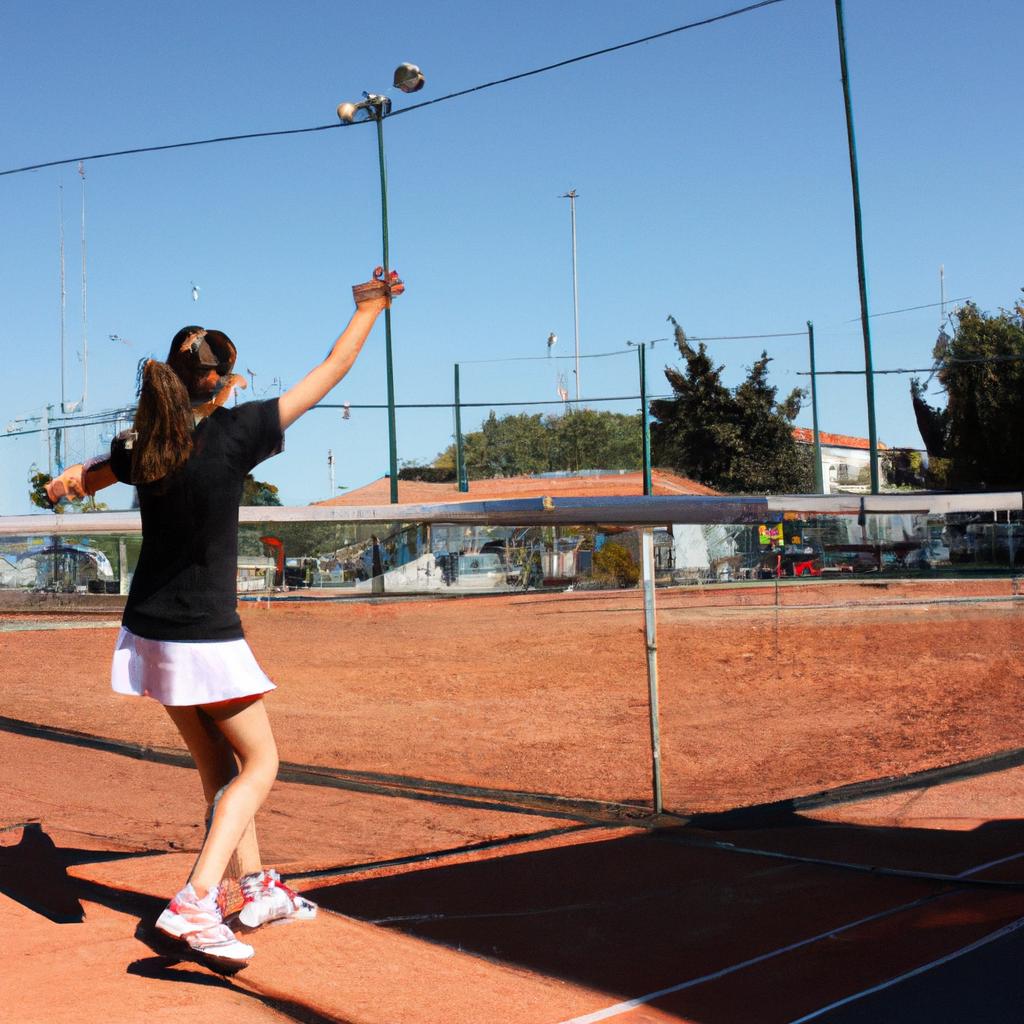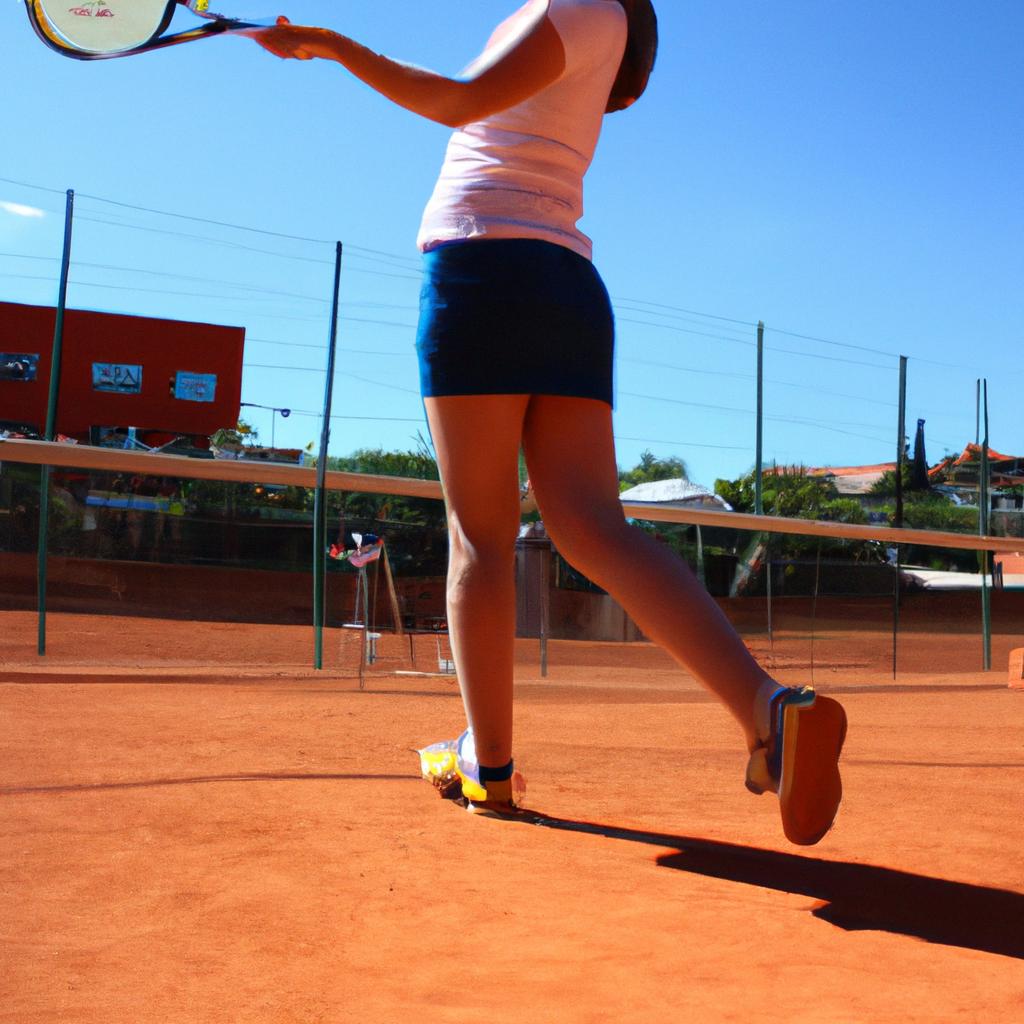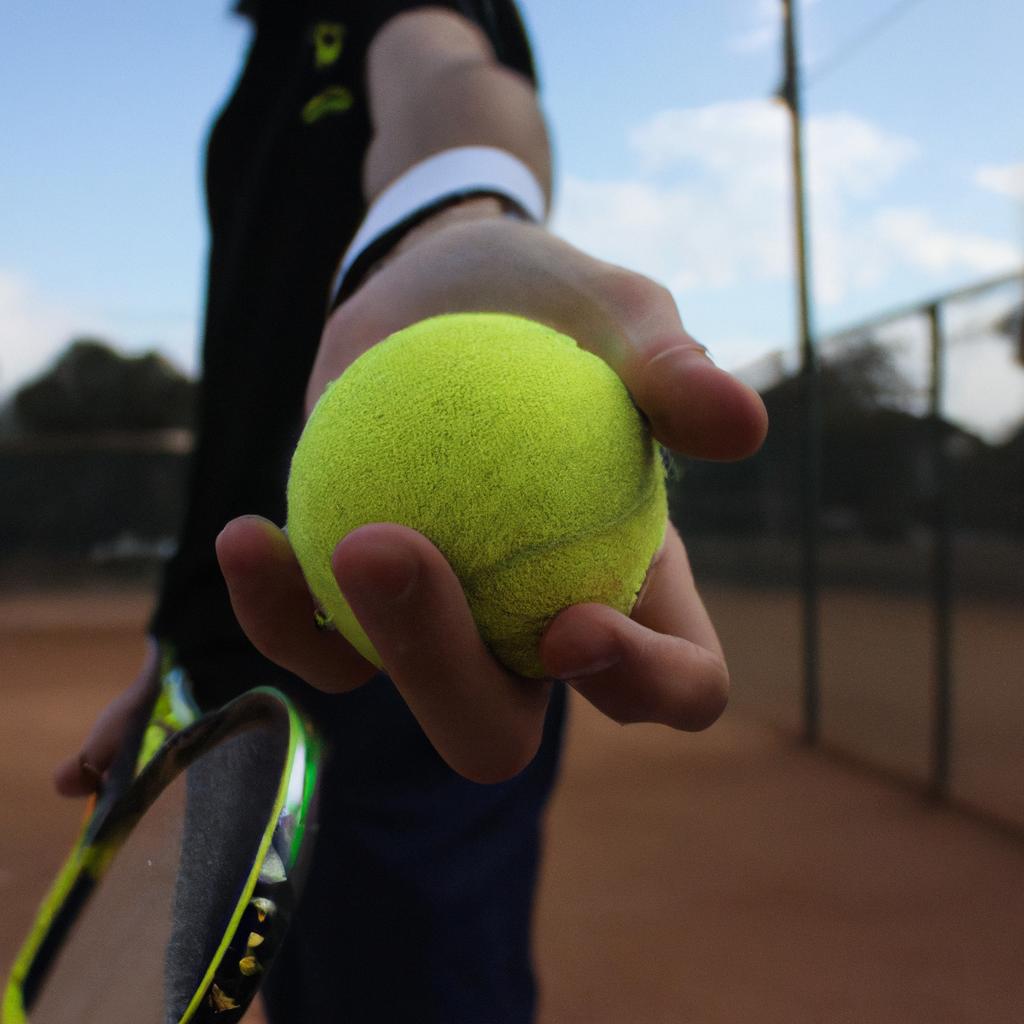Tennis is a captivating sport that has captured the attention of millions worldwide. Its dynamic nature, strategic gameplay, and physical demands make it an attractive choice for individuals seeking to engage in a thrilling and challenging activity. For instance, imagine Sarah, a member of the local Swim & Tennis Club who wishes to explore new avenues of fitness. She decides to give tennis a try after witnessing an intense match between two skilled players at the club’s annual tournament. However, like many beginners, Sarah may face initial challenges when navigating through the complexities of this exhilarating sport.
This article aims to serve as an introductory guide for members of Swim & Tennis Club who are interested in learning about tennis or improving their existing skills. By providing valuable insights into the fundamental aspects of tennis – from understanding the rules and equipment required to developing essential techniques – readers will gain a comprehensive overview of what it takes to excel in this sport. Additionally, we will delve into strategies on how to overcome common obstacles encountered by beginners, ensuring that every aspiring player can experience growth and enjoyment throughout their journey within the world of tennis. Whether one seeks recreational play or competitive participation, this guide intends to equip readers with the necessary knowledge and resources to embark on their tennis endeavors confidently.
Benefits of Playing Tennis
Tennis is a sport that offers numerous benefits to individuals who engage in it. One compelling example is the story of Sarah, a 35-year-old woman who decided to take up tennis as a form of exercise and recreation. As she began playing regularly, Sarah noticed significant improvements in her physical fitness and overall well-being.
One notable benefit of playing tennis is its ability to enhance cardiovascular health. Engaging in this fast-paced sport requires constant movement, which increases heart rate and improves blood circulation throughout the body. Additionally, tennis helps build endurance as players constantly run, sprint, and change direction on the court. These factors contribute to improved stamina and reduced risk of conditions such as heart disease.
In addition to physical health benefits, tennis also promotes mental well-being. Playing tennis involves strategizing and making quick decisions under pressure. This enhances cognitive function by improving problem-solving skills, concentration levels, and hand-eye coordination. Furthermore, engaging in regular physical activity like tennis releases endorphins – hormones responsible for feelings of happiness and relaxation – thereby reducing stress levels.
To further illustrate the advantages of playing tennis:
- Increased agility: The continuous movements required during play improve flexibility and balance.
- Weight management: Regular participation in tennis aids in maintaining a healthy weight.
- Social interaction: Joining a tennis club provides opportunities for socialization with fellow enthusiasts.
- Improved bone density: The impact forces experienced while playing help strengthen bones.
| Benefit | Description |
|---|---|
| Physical fitness | Tennis improves cardiovascular health and builds endurance |
| Mental well-being | Enhances cognitive function and reduces stress |
| Agility | Increases flexibility and balance |
| Weight management | Aids in maintaining a healthy weight |
Overall, participating in the sport of tennis brings forth an array of benefits encompassing both physical fitness and mental well-being. Understanding these advantages can motivate individuals to take up the sport and experience its positive impact on their lives. In the subsequent section, we will delve into the basic rules and scoring system of tennis, providing an essential foundation for beginners looking to start their journey in this exciting sport.
Basic Rules and Scoring System
Section Transition: Having explored the numerous benefits of playing tennis, let us now delve into understanding the basic rules and scoring system that govern this captivating sport.
To grasp the essence of tennis, it is crucial to familiarize ourselves with its fundamental rules and scoring procedures. Let’s consider a hypothetical scenario where two players are engaged in a singles match for better comprehension.
Firstly, the court is divided by a net, separating the players’ designated sides known as “service courts.” The server begins each game by standing behind their baseline and hitting the ball diagonally across the net into their opponent’s service box. The receiver must then return the ball before it bounces twice on their side of the court. This exchange continues until one player fails to return the ball within bounds or commits an error.
Scoring in tennis may seem daunting at first but follows a systematic pattern. Players start with zero points called “love,” followed by 15, 30, and finally 40 points. When both players reach 40-40 (known as “deuce”), they must win two consecutive points to secure the game. If a player wins one point after deuce, they earn an advantage, denoted as “ad.” Winning another point while holding advantage grants them victory in that particular game.
In summary:
- The server initiates play from behind their baseline.
- Players aim to hit the ball within boundaries without committing errors.
- Points progress from love to 15, 30, 40, and potentially ad if tied at deuce.
- Two consecutive points after deuce ensure winning a game.
Understanding these basic rules and scoring mechanisms lays a strong foundation for your journey into mastering tennis. Now that we have grasped how games are won and lost, let’s explore essential tennis equipment necessary for engaging in this exhilarating sport.
Essential Tennis Equipment
Transitioning from the previous section on Basic Rules and Scoring System, let’s now delve into another crucial aspect of tennis: Essential Tennis Equipment.
To understand the importance of having the right equipment, let’s consider an example. Imagine a beginner player who has just started taking lessons at our Swim & Tennis Club. They have been using a borrowed racquet for their first few sessions but quickly realize that it doesn’t quite suit their playing style or grip preference. This realization prompts them to seek out appropriate tennis equipment that can enhance their game and provide better control over their shots.
When it comes to selecting the ideal tennis equipment, there are several key factors to keep in mind:
- Racquets: A good quality racquet is essential for any tennis player. It should be chosen based on factors such as weight, head size, string tension, and grip size. Each of these elements influences how a player feels while holding and swinging the racquet, ultimately affecting shot accuracy and power.
- Tennis Balls: The type of balls used during play can significantly impact the overall game experience. Different types of balls offer varying levels of speed and bounce, catering to different skill levels and court surfaces.
- Footwear: Proper footwear plays a vital role in ensuring agility and stability on the court. Tennis-specific shoes with features like lateral support, cushioning, durability, and traction are designed to improve performance while reducing the risk of injuries caused by quick movements.
- Clothing: Comfortable clothing suitable for physical activity is recommended for optimal performance during matches or practice sessions. Breathable fabrics that wick away moisture help regulate body temperature during intense rallies.
Now that we’ve explored some important considerations when choosing tennis equipment let’s take a moment to reflect upon its significance before moving onto discussing Different Types of Tennis Courts.
Consider this table highlighting the benefits associated with acquiring appropriate tennis equipment:
| Benefit | Emotional Response |
|---|---|
| Enhanced control and accuracy | Confidence in shot placement |
| Increased power and shot consistency | Excitement about improved performance |
| Improved stability and reduced injuries | Sense of security on the court |
| Comfortable attire for better focus | Relaxation while playing |
Having the right tennis equipment not only enhances a player’s skills but also instills confidence, excitement, security, and relaxation. Armed with this understanding, we can now move forward to explore Different Types of Tennis Courts.
Remember to equip yourself with the necessary gear before stepping onto any tennis court – it is an essential aspect of achieving success in your game.
Different Types of Tennis Courts
Section: Different Types of Tennis Courts
Imagine this scenario: You arrive at your local tennis club, ready to play a friendly match with a fellow member. As you approach the courts, you notice something peculiar – there are multiple types of tennis courts available for use. Whether it’s grass, clay, hard court or even carpet, each surface offers its own unique playing experience.
Understanding these different types of tennis courts is essential for any aspiring player. Let’s explore some key characteristics and considerations associated with each type:
-
Grass Courts:
- Known for their fast pace and low bounce.
- Require players to adapt quickly due to the unpredictable nature of the surface.
- Examples include Wimbledon’s iconic grass courts.
-
Clay Courts:
- Offer slower gameplay due to higher friction between shoes and surface.
- Provide more time for players to react and strategize during rallies.
- Promote sliding movements that require excellent footwork skills.
-
Hard Courts:
- Considered medium-paced surfaces suitable for both aggressive and defensive styles.
- Commonly found in most recreational clubs as well as professional tournaments like the US Open.
- Offer consistent ball bounces, allowing players to rely on precise shots and movement patterns.
-
Carpet Courts:
- Characterized by their fast-playing conditions similar to grass courts.
- Rarely used in modern tournaments but can be occasionally found in indoor facilities.
- Demand quick reflexes and efficient shot-making abilities.
| Surface Type | Pace | Ball Bounce | Common Locations |
|---|---|---|---|
| Grass | Fast | Low | Wimbledon |
| Clay | Slow | High | Roland Garros |
| Hard | Medium | Consistent | US Open |
| Carpet | Fast | Low | Indoor Facilities |
By understanding the characteristics of each type of tennis court, players can adapt their playing styles and strategies accordingly. Whether it’s adjusting to a faster pace on grass or utilizing sliding techniques on clay, being aware of these differences will enhance your overall performance on the court.
So let’s dive right in and explore the essential techniques required for a successful game!
Proper Tennis Technique
In the previous section, we explored the different types of tennis courts and how they can impact gameplay. Now, let’s delve into the crucial aspect of proper tennis technique. To illustrate its significance, imagine a scenario where two players with equal physical abilities compete against each other. Player A has mastered the correct technique while Player B lacks it. Despite their comparable fitness levels, Player A consistently outperforms Player B due to their superior skills.
To achieve success in tennis, it is essential to focus on developing proficient technique. Here are some key elements that contribute to effective play:
- Grip: The grip you choose will greatly influence your shots’ accuracy and power. Experiment with various grips such as Eastern, Continental, or Western to find one that suits your playing style.
- Footwork: Good footwork allows you to move swiftly across the court and position yourself for optimal shot execution. Practice agility drills and develop a strong understanding of weight transfer to enhance your footwork skills.
- Swing Mechanics: Every shot in tennis requires specific swing mechanics for maximum effectiveness. Whether it’s the forehand, backhand, serve, or volley, ensure that you understand and practice proper form for each stroke.
- Timing and Rhythm: Mastering timing and rhythm enables you to connect cleanly with the ball consistently. Focus on anticipating your opponent’s shots and positioning yourself early to execute well-timed strokes.
By honing these fundamental aspects of proper tennis technique through dedicated practice sessions, you can significantly improve your performance on the court.
Now let’s explore another vital aspect of being a respectful player – Tennis Etiquette and Sportsmanship
Tennis Etiquette and Sportsmanship
Transitioning from the previous section on proper tennis technique, it is important to not only focus on technical aspects but also understand and adhere to the principles of tennis etiquette and sportsmanship. These guidelines help create a positive and respectful environment both on and off the court, enhancing the overall experience for everyone involved.
To illustrate the significance of tennis etiquette, let’s consider a hypothetical scenario. Imagine two players engaged in an intense match. Player A hits a powerful shot that lands just inside the baseline. However, instead of acknowledging their opponent’s skillful play, Player B questions whether the ball was actually in or out, expressing doubt and undermining fair play. This kind of behavior goes against good sportsmanship and can lead to unnecessary tension between players.
In order to foster a culture of respect within our club, here are some key points to keep in mind regarding tennis etiquette:
- Respect your opponent: Treat your opponents with fairness and dignity throughout the game.
- Maintain appropriate noise levels: Avoid excessive shouting or grunting during gameplay as it may distract your opponent.
- Retrieve balls promptly: After a point has been played, retrieve any stray balls quickly so as not to disrupt the flow of the match.
- Observe time limits: Be mindful of time limits between points, games, and sets so that matches progress smoothly.
To further emphasize these guidelines, refer to this table illustrating examples of acceptable behaviors versus those that should be avoided:
| Acceptable Behaviors | Discouraged Behaviors |
|---|---|
| Applauding good shots | Berating oneself or others |
| Offering handshake after match | Arguing over line calls |
| Engaging in friendly conversation | Displaying aggressive body language |
By adhering to proper etiquette both on and off the court, we contribute towards building a supportive community where members enjoy healthy competition while upholding values such as integrity, fairness, and respect.
Remember, tennis etiquette and sportsmanship are not just rules to follow but principles that enhance the overall experience for everyone involved. By embodying these ideals, we can create a positive environment where both beginners and experienced players feel welcome and encouraged to improve their skills.
 Beverly Crest Swim
Beverly Crest Swim



